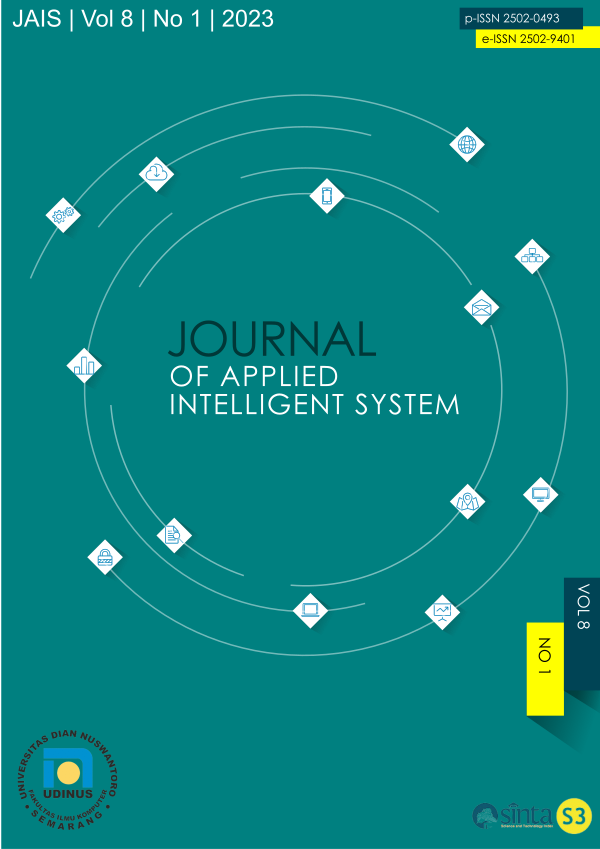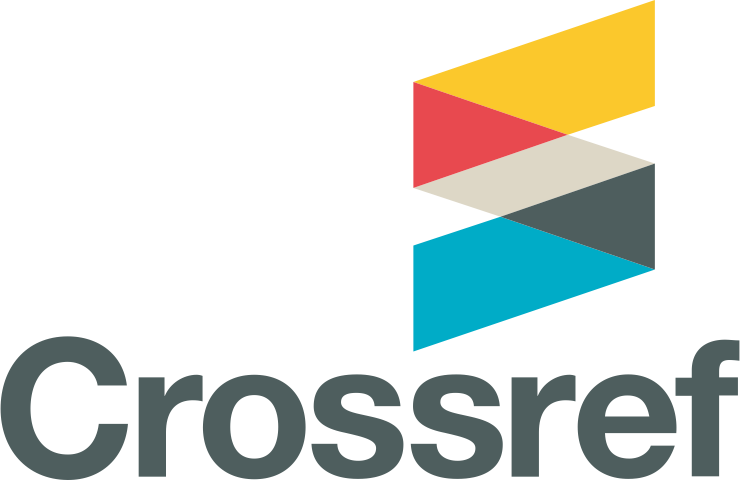Implementation of the K-Nearst Neighbor (k-NN) Algorithm in Classification of Angora and Country Cats
DOI:
https://doi.org/10.33633/jais.v8i1.7129Abstract
There are so many types of mixed cats from various cat breeds, so many people find it difficult to identify and classify them. Therefore, we need a method that can classify the type of cat breeds. In this study the authors used the K-Nearest Neighbor (k-NN) algorithm to make it easier to recognize and classify cat breeds based on certain characteristics. The author took samples of 2 types of cat races, namely the Anggora race and the Kampung race. The implementation stage is to determine the euclidean distance and sort it and then determine the value of K to find the nearest neighbor. In testing, the authors used 50 training data and 50 test data with 6 attributes used, namely body shape, nose width, nose height, food type, hair type and hair length. The results of the classification of cat breeds using the k-NN method obtained an accuracy rate of 94% and an error rate of 6%.References
Muhammad Afif A. F, et al. Cat Race Classification using Convolutional Neural Network (CNN) Algorithm. E-Proceeding of Engineering. 2021; Vol.8, p. 2
Anggi N. P, Isnawati. Morphogenetics of the House Cat (Felis domesticus) as a Natural Predator Breeding Tool for Rodents. Bio Lantern. 2022; Vol.11, p. 217
Hasmawati, Nangi, et al. Goods Sales Prediction Application Using the k-Nearest Neighbor (k-NN) Method (Case Study of Tumaka Mart). Semantics. 2017. Vol.3, no.2, pp. 151-160
Ahmad Khairi, et al. Implementation of K-Nearest Neighbor (KNN) for Classification of Pre-Prosperous Communities in Sapikerep Village, Sukapura District. Trilogy: Journal of Technology, Health, and Humanities. 2021
Muhammad Ihsan Al-Hafiz . Implementation of the K-Nearest Neighbor (K-NN) Algorithm in Determining Cat Types. Thesis. Palangkaraya & College of Information and Computer Management (STMIK) Palangkaraya. 2021.
Permana Putra, et al. Analysis of the K-Nearest Neighbor (KNN) Method in Iris Flower Data Classification. Kaputama Informatics Engineering Journal (JTIK). 2022; Vol.6
Anton Yudhana, et al. K-NN Algorithm with Euclidean Distance for Predicting the Yield of Sengon Sawmills. 2020. TRANSMISSION
HAF Willmen TB Panjaitan, et al. Rice Harvest Prediction Using the k-Nearest Neighbor Algorithm. Pros. 5th Year SNATIVE. 2018. Pp. 621-628
M.S. Mustafa and IW Simpen . Designing a Timely Graduation Prediction Application for New Students with Data Mining Techniques (Case Study: Student Academic Data at STIMIK Dipanegara Makassar). Creat, Inf, Technol, J. 2015. Vol.1, no.4, pp.270-281
A. Hamdi, et al. The Timeseries K-Nearest Neighbor Regression Method in Predicting Outgoing Goods at the Warehouse of PT Putra Preneur Banjarbaru. Monday. Nas. Computing Science. 2019. Vol.2, pp.37-45
I. Drajana and C. Rally. Prediction of Cococnut Oil Production Using k-Nearest Neighbor and Backward Elimination. TECNOSCIENZA. 2018. Vol.13, no.1, pp. 51-64
N. Lizarti and AN Ulfah. Application of the k-Nearest Neighbor Algorithm for Determining Study Specialization (Case Study: STIMIK AMIK Riau Informatics Engineering Study Program). Fountain Informatics J. 2019. Vol.4, p.1-7
I. Riadi, et al. Handwriting Identification of Japanese Katakana Letters with the Euclidean Method. J-SAKTI (Journal of Computing and Information Science). 2020. Vol. 4, no. 1, p. 29
A. Fadlil and Saifudin. Wood Image Identification System Based on Texture Using Gray Level Coocurrence Matrix (GLCM) with Euclidean Distance Classification. 2015. Vol.19, no.3, pp.181-186
Sunardi, A. Fadlil, and Suprianto. Sentiment Analysis Using the Naive Bayes Classifier Method in Student Questionnaires. Saintekbu. 2018. Vol.10, no.2, pp. 1-9.
Downloads
Published
Issue
Section
License
- Authors retain copyright and grant the journal right of first publication with the work simultaneously licensed under a Creative Commons Attribution License that allows others to share the work with an acknowledgment of the work's authorship and initial publication in this journal.
- Authors are able to enter into separate, additional contractual arrangements for the non-exclusive distribution of the journal's published version of the work (e.g., post it to an institutional repository or publish it in a book), with an acknowledgment of its initial publication in this journal.
- Authors are permitted and encouraged to post their work online (e.g., in institutional repositories or on their website) prior to and during the submission process, as it can lead to productive exchanges, as well as earlier and greater citation of published work (See The Effect of Open Access).









